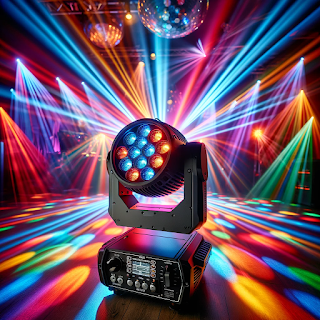Mastering the Art of Music Curation: Deep Dive into Selection and Arrangement Techniques for DJs.
Music curation is the soul of a DJ's performance. It's not just about selecting tracks but understanding the mood, the audience, the event, and the story you want to tell. Effective music curation can elevate a DJ from good to unforgettable. Let's delve deep into the art and science of music curation for DJs.
### The Philosophy of Music Curation
Before we discuss techniques, it's vital to grasp the philosophy behind music curation. As a DJ, you're not just playing tracks; you're taking your audience on a journey. This journey can evoke emotions, memories, and even tell a story. Your role is akin to a storyteller, with each track representing a chapter or a turn in the narrative.
### Understanding Your Audience
A significant aspect of music curation is understanding your audience. Are you playing at a wedding, a club, a corporate event, or a beach party? Each event has its unique vibe and audience expectations.
- **Demographics**: Age, cultural background, and musical tastes can give you clues about what tracks might resonate.
- **Event Type**: A corporate event might require more laid-back tracks, while a club night demands energetic beats.
- **Venue**: The acoustics and size of the venue can influence track selection. For instance, an intimate setting might not be suitable for booming bass-heavy tracks.
### Building Your Library
A well-organized music library is a DJ's best friend. Here's how to make sure yours is up to the task:
- **Genre Classification**: Organize your tracks by genre. This way, you can quickly shift the mood or energy level of your set.
- **Rating System**: Rate your tracks based on energy level, mood, or personal preference.
- **Regular Updates**: Music trends change. Make sure you're adding new tracks regularly and re-evaluating old ones.
### The Art of Track Selection
Now, let's get to the heart of the matter: selecting tracks.
- **Flow and Energy**: Think of your set as a rollercoaster ride. You want highs and lows, moments of calm followed by bursts of energy. Plan your track arrangement to build up to a peak, then gradually bring the energy down before ramping up again.
- **Harmonic Mixing**: Mixing tracks that are harmonically compatible can make transitions smoother and more pleasing to the ear.
- **Avoiding Predictability**: While it's essential to play crowd-pleasers, throwing in a surprise track or an unexpected transition can make your set memorable.
### Reading the Room
No matter how much you plan, sometimes you'll need to change direction based on the crowd's response. This is where the skill of 'reading the room' comes into play.
- **Body Language**: Are people dancing, nodding their heads, or looking bored? Adjust accordingly.
- **Requests**: While you don't have to honor every request, they can give you a sense of what the audience is craving.
### The Role of Technology
Modern DJing software offers a plethora of tools to aid in music curation.
- **Recommendation Engines**: Software like Serato DJ or Rekordbox can suggest tracks that match the current song's BPM or key.
- **Playlists**: Create themed playlists for different events or moods.
- **Analytic Tools**: Some software can analyze the dance floor's energy level, helping you adjust your set in real-time.
### Closing Thoughts
Mastering music curation is a lifelong journey. It's a blend of art and science, intuition, and planning. As you grow in your DJing career, your ability to curate the perfect set will continually evolve. Remember to stay updated with music trends, invest in understanding your audience, and most importantly, enjoy the process. After all, music is meant to be enjoyed, and as a DJ, you're at the forefront of that experience.




Comments
Post a Comment